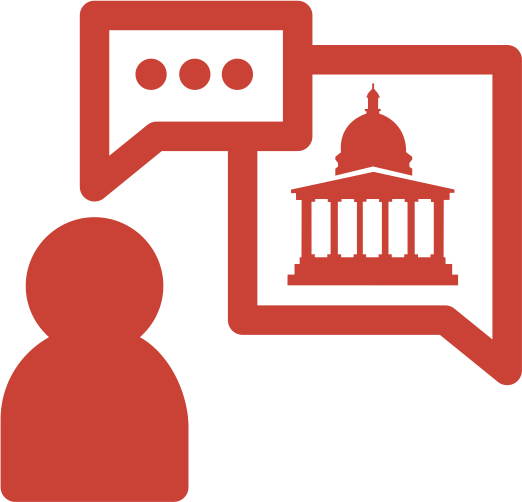In a rapidly evolving world, the importance of art education cannot be overstated. Art education is not merely about painting or music; it is a powerful tool for fostering critical thinking and cognitive development.
At Aditya Birla World Academy, we believe that integrating the arts into education allows students to think beyond textbooks. As one of the best IBDP schools in Mumbai, we recognise that arts education nurtures curiosity and inquiry. This equips students with the ability to analyse and form independent judgments. This is particularly crucial in today’s fast-paced world.
Among IB schools in South Mumbai, we take pride in offering a curriculum that seamlessly blends academic rigour with artistic expression, ensuring students receive a well-rounded education.
Why Arts Education Matters in Today’s World
The role of arts education extends far beyond developing artistic skills—it shapes how students perceive and respond to the world around them. At Aditya Birla World Academy, we see the arts as an essential component of holistic learning, offering students a space to explore, experiment, and express themselves.
In today’s digital era, where information is readily available, critical thinking is more important than rote memorization. Arts education encourages students to ask questions, interpret meaning, and develop perspectives, allowing them to engage with complex ideas more effectively. When students engage in drama, painting, music, or dance, they are not only refining their craft but also learning to analyze, critique, and adapt—skills that are crucial in all academic and professional fields.
Furthermore, the arts teach patience, discipline, and resilience. Whether learning an instrument or perfecting a dance routine, students develop perseverance and problem-solving abilities that benefit them across disciplines. We integrate arts into our curriculum to ensure that students gain a balanced and enriched educational experience.
How the Arts Foster Critical Thinking Skills
We believe that true learning happens when students are encouraged to think, analyse, and interpret rather than simply absorb information. The arts naturally cultivate these skills, making students more inquisitive and analytical.
Engaging in artistic activities requires students to make decisions, evaluate outcomes, and refine their work based on feedback. Be it composing a piece of music, crafting a sculpture, or writing a script, students must assess their creative choices. This process strengthens their ability to think critically and approach problems with a solutions-oriented mindset.
Additionally, art education promotes observational skills. For instance, studying a painting involves analyzing colors, shapes, and themes, while playing a musical instrument requires an understanding of rhythm, tone, and structure. These detailed analyses enhance students' cognitive abilities and improve their capacity to make informed judgments.
By fostering critical thinking through the arts, we prepare our students for success in all fields, ensuring they become independent thinkers who can navigate the complexities of an ever-changing world.
The Role of Arts in Enhancing Cognitive Flexibility
Cognitive flexibility—the ability to adapt, shift perspectives, and approach problems in innovative ways—is a fundamental skill for success in today’s world. At Aditya Birla World Academy, we recognize that arts education plays a pivotal role in developing this ability in students.
Through artistic expression, students learn to challenge conventional thinking and embrace diverse viewpoints. Whether interpreting a poem, improvising in a theater performance, or experimenting with abstract art, they develop the ability to think in non-linear and imaginative ways. This flexibility is essential not just in creative fields but also in science, business, and technology.
Moreover, artistic disciplines encourage students to explore multiple solutions to a single problem. For example, in visual arts, there is no single “correct” way to represent an idea—students are encouraged to experiment, revise, and innovate. This nurtures adaptability and resilience, helping students excel in environments that require quick thinking and problem-solving.
By embedding the arts in education, we ensure our students gain the cognitive flexibility necessary to navigate academic and professional challenges with confidence and creativity.
Connecting Arts with Other Disciplines
The arts do not exist in isolation—they enrich and enhance understanding across various subjects, creating well-rounded learners who can make connections between different fields.
For example, music and mathematics share strong ties, with rhythm and patterns mirroring concepts in algebra and geometry. Similarly, drama and literature work hand-in-hand to improve communication skills, emotional intelligence, and narrative analysis. Visual arts often intersect with history and science, allowing students to explore cultural influences, design innovations, and technological advancements through creative projects.
By encouraging students to see the connections between the arts and other subjects, we equip them with a holistic perspective that fosters deeper understanding and intellectual curiosity. This interdisciplinary approach ensures that students not only appreciate the value of artistic expression but also recognize its relevance in a broader academic and professional context.
Practical Ways to Integrate Arts into Everyday Learning
Parents and educators can integrate the arts into everyday learning in simple yet impactful ways:
- Encourage storytelling and creative writing: Writing poems, scripts, or short stories allows students to express their thoughts while refining their analytical and linguistic skills.
- Incorporate music into learning: Songs and rhythms can make memorization easier, especially in subjects like languages and history.
- Use visual arts for conceptual understanding: Drawing diagrams, painting historical events, or creating mind maps can aid comprehension in various subjects.
- Introduce drama and role-play: Acting out historical events, scientific discoveries, or literary scenes enhances engagement and understanding.
- Explore museum visits and cultural experiences: Exposure to diverse artistic styles and cultural artifacts nurtures critical thinking and broadens perspectives.
Bottomline
We firmly believe in the importance of art education as a catalyst for developing well-rounded, analytical, and creative thinkers. Arts education is not just about learning a skill—it is about cultivating curiosity, adaptability, and problem-solving abilities that extend beyond the classroom.
As one of the best IBDP schools in Mumbai, we ensure that our students receive a holistic education that balances academics with artistic expression. Among IB schools in South Mumbai, we stand out for our commitment to fostering an environment where students are encouraged to think critically, challenge conventions, and embrace creativity in all aspects of learning.

 Online Admission
Online Admission Scholarship Programme
Scholarship Programme University Counselling
University Counselling Leadership
Leadership Voices at ABWA
Voices at ABWA